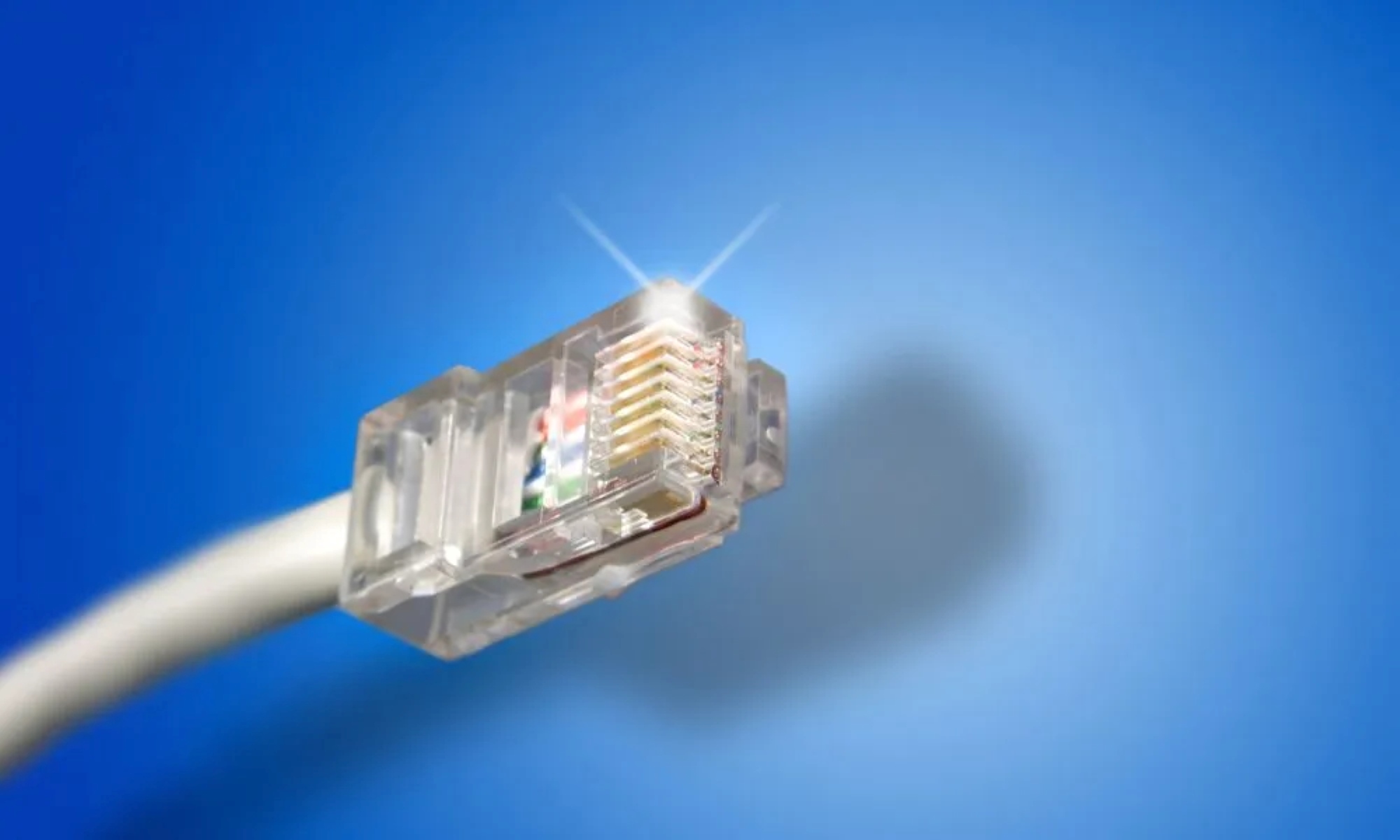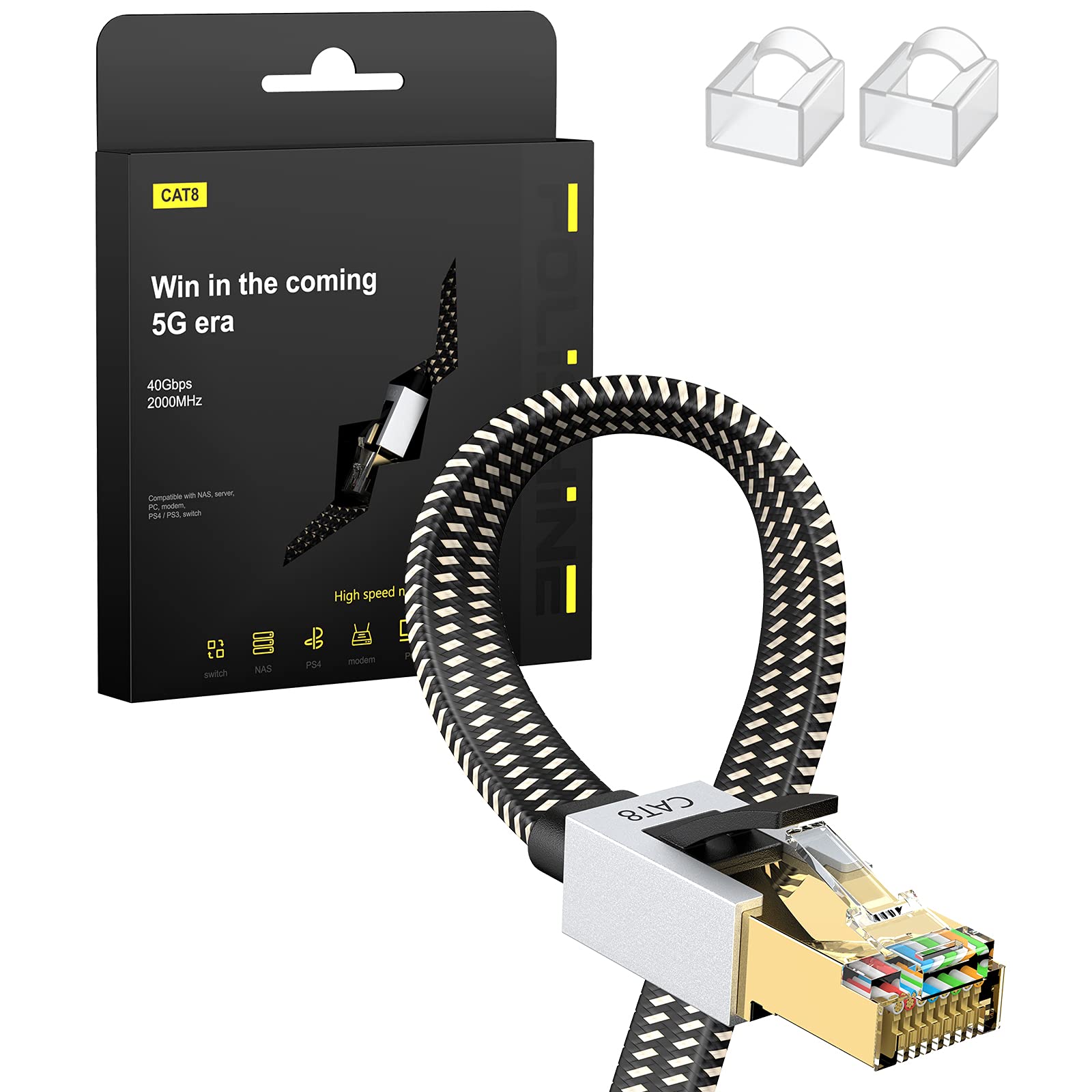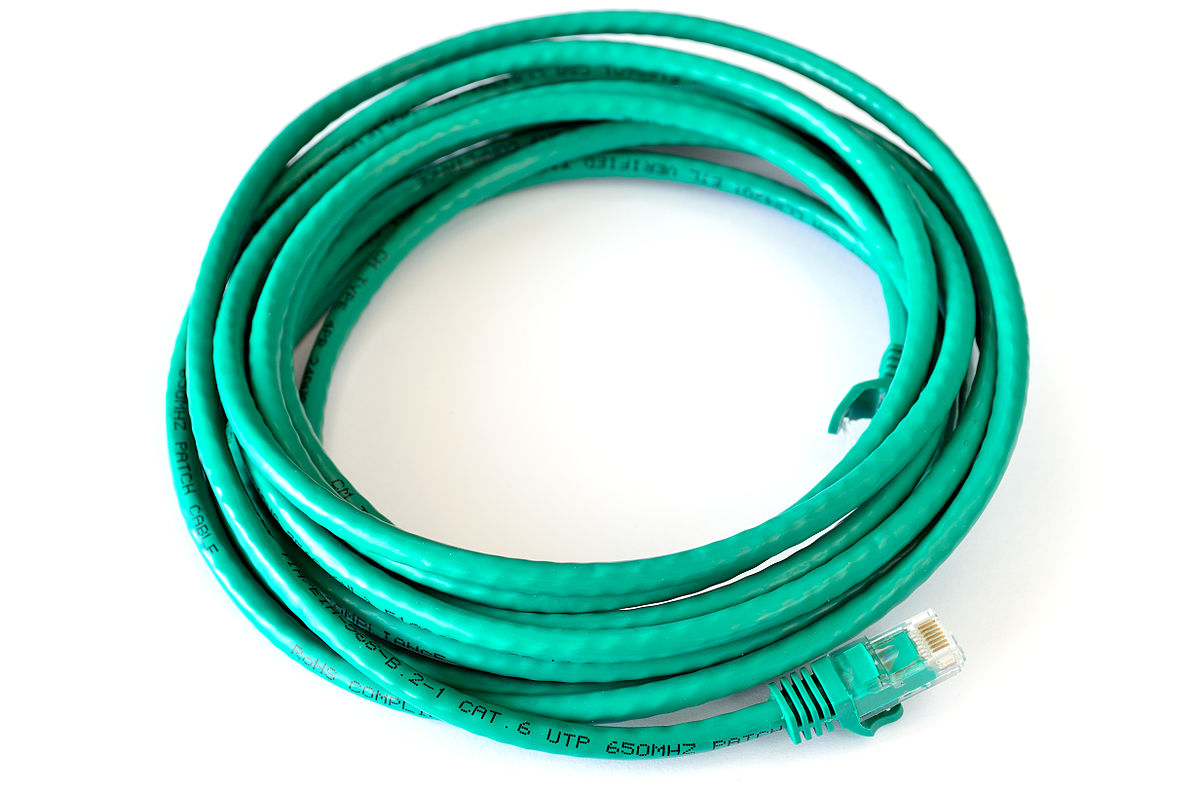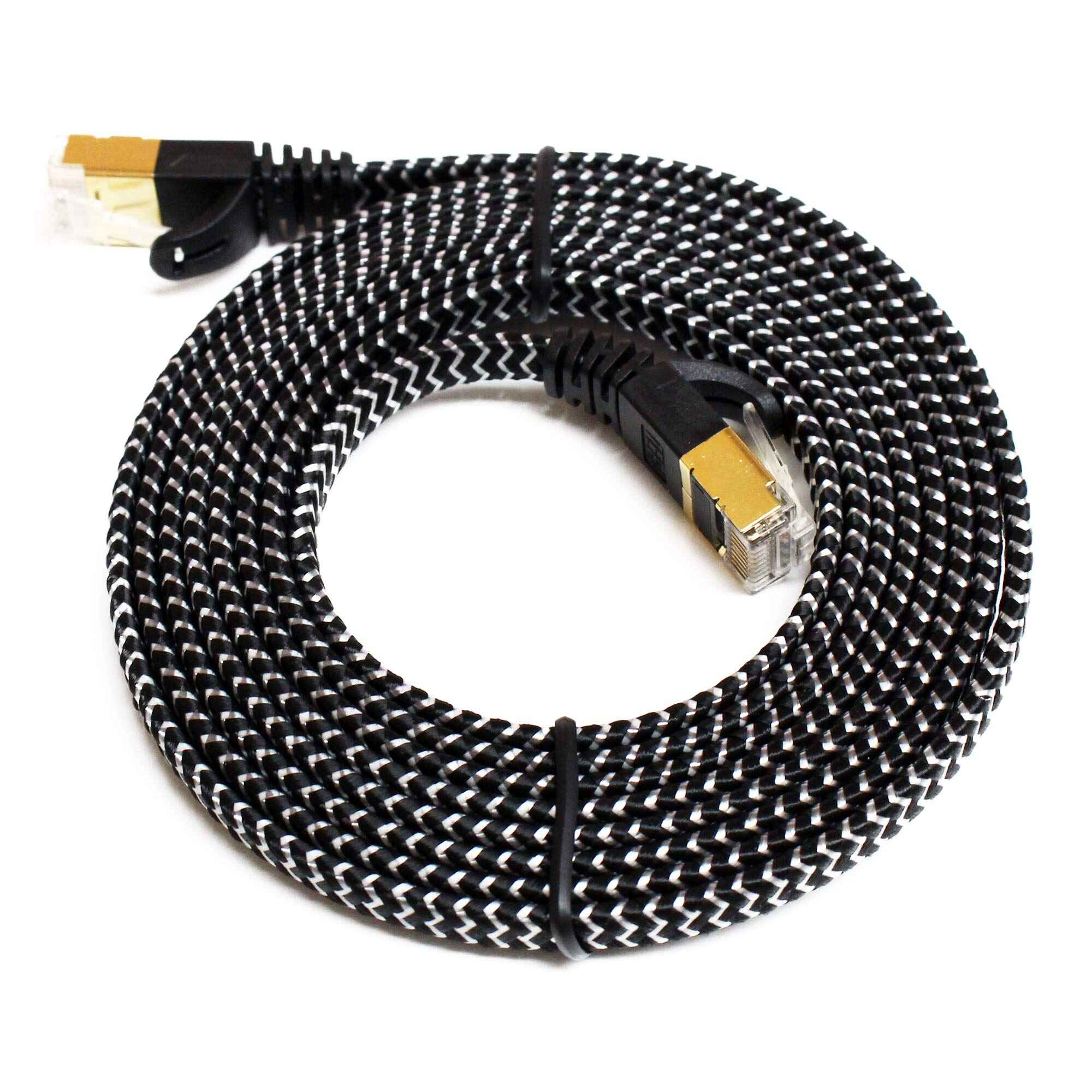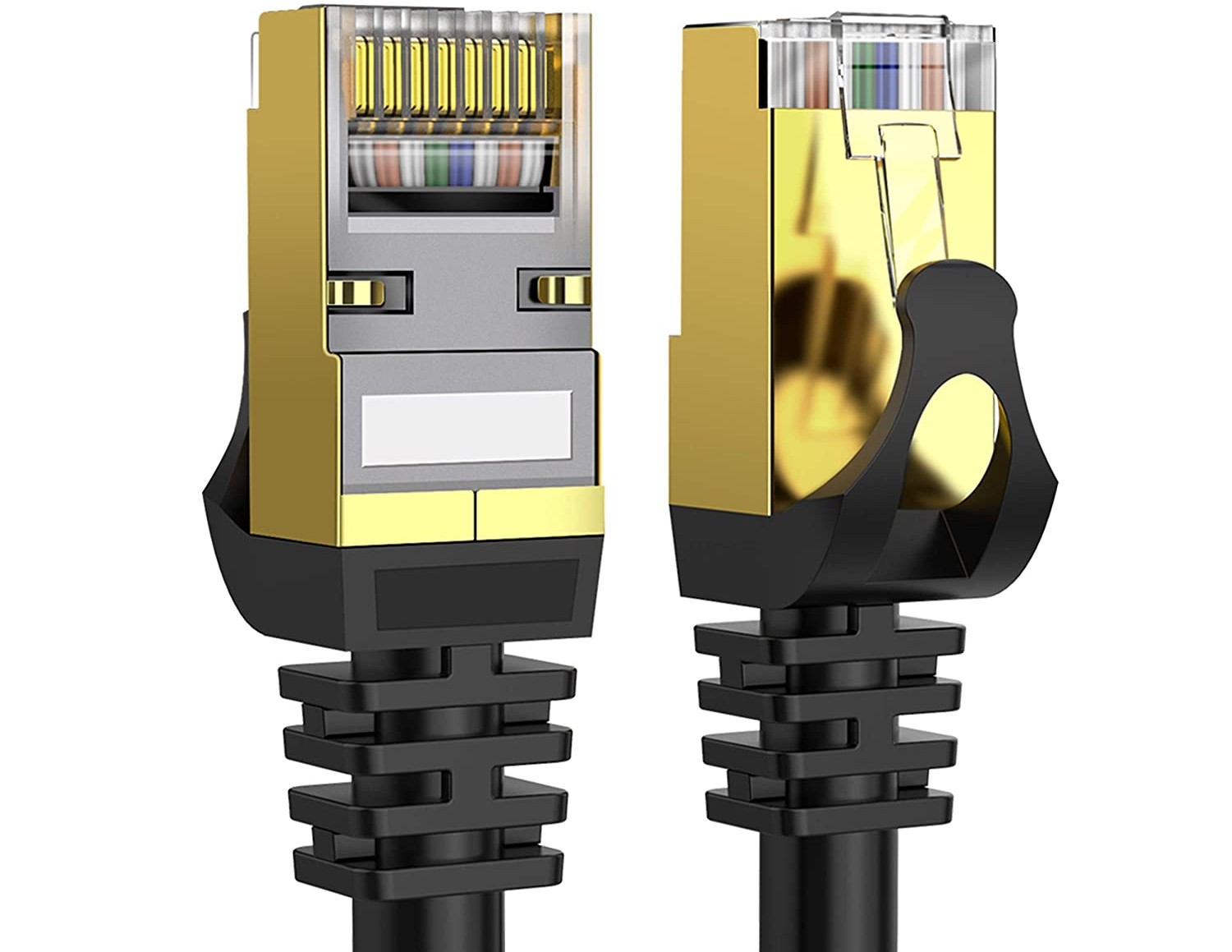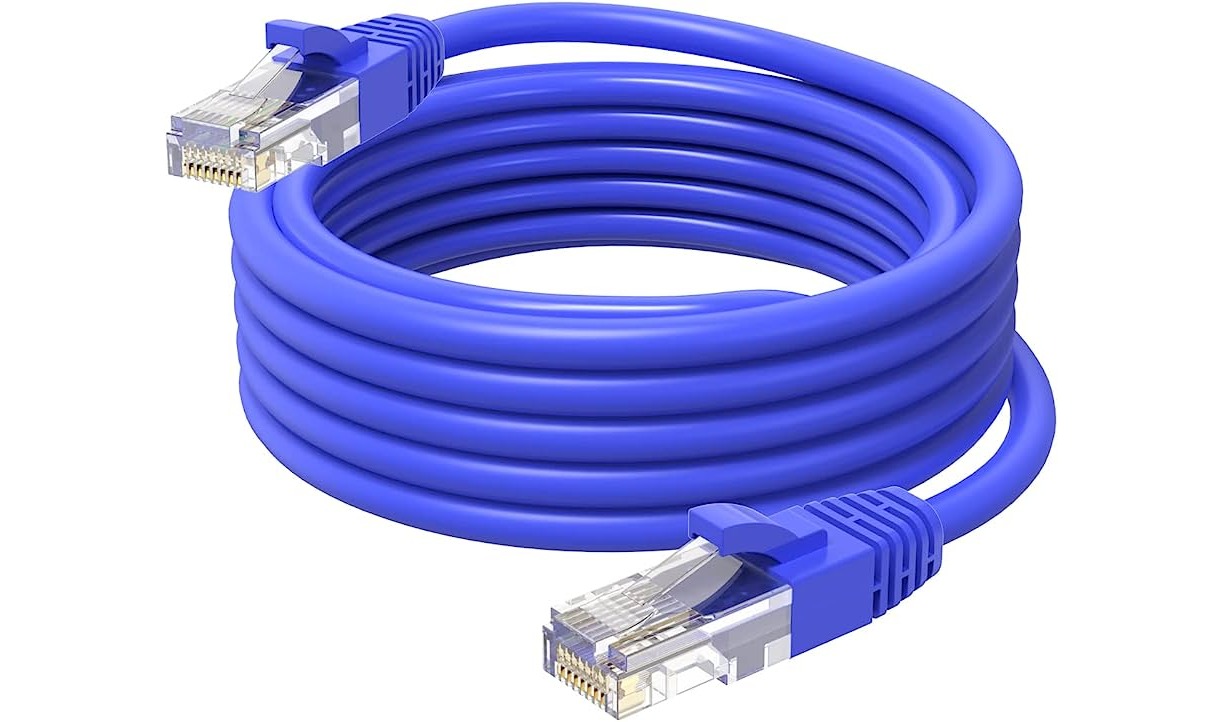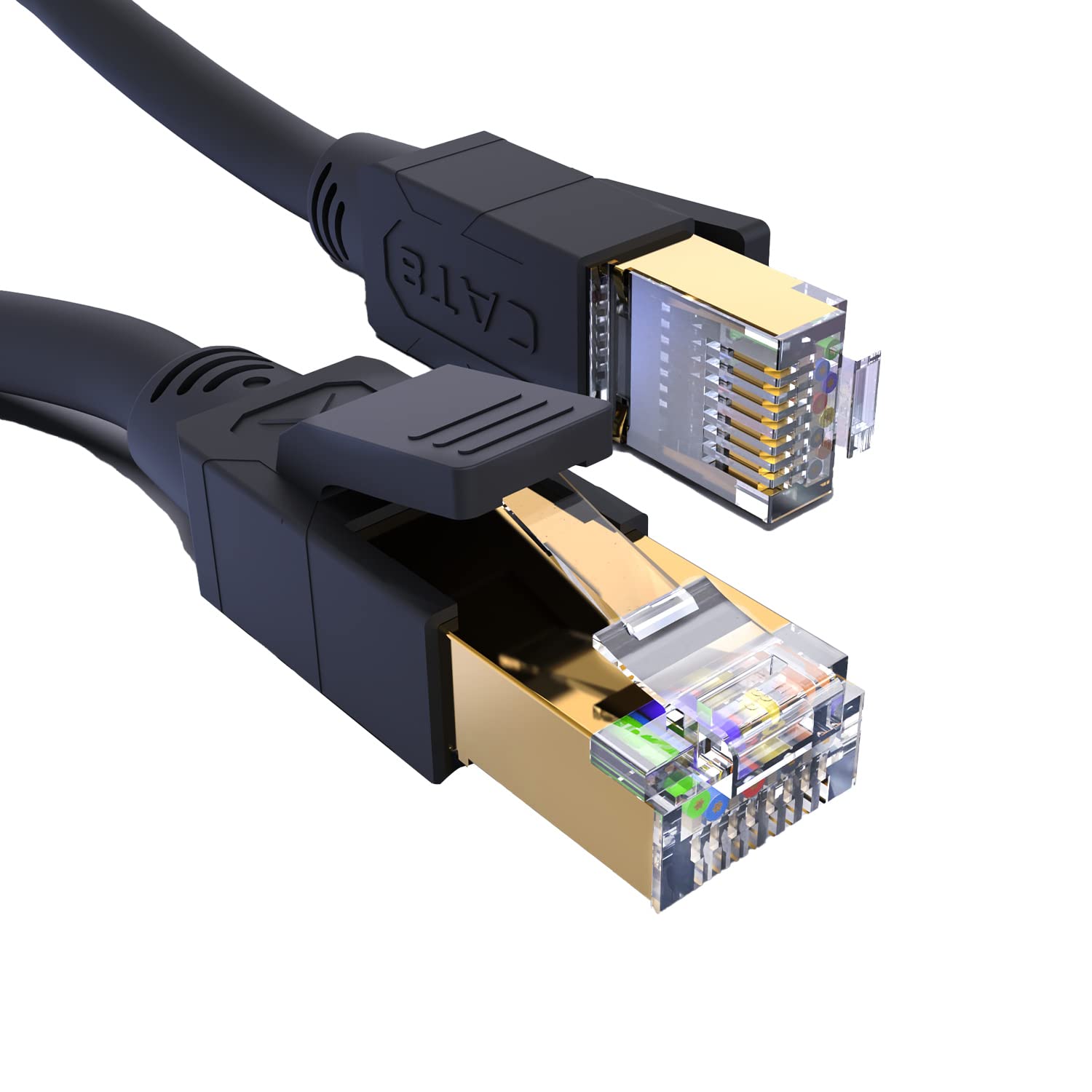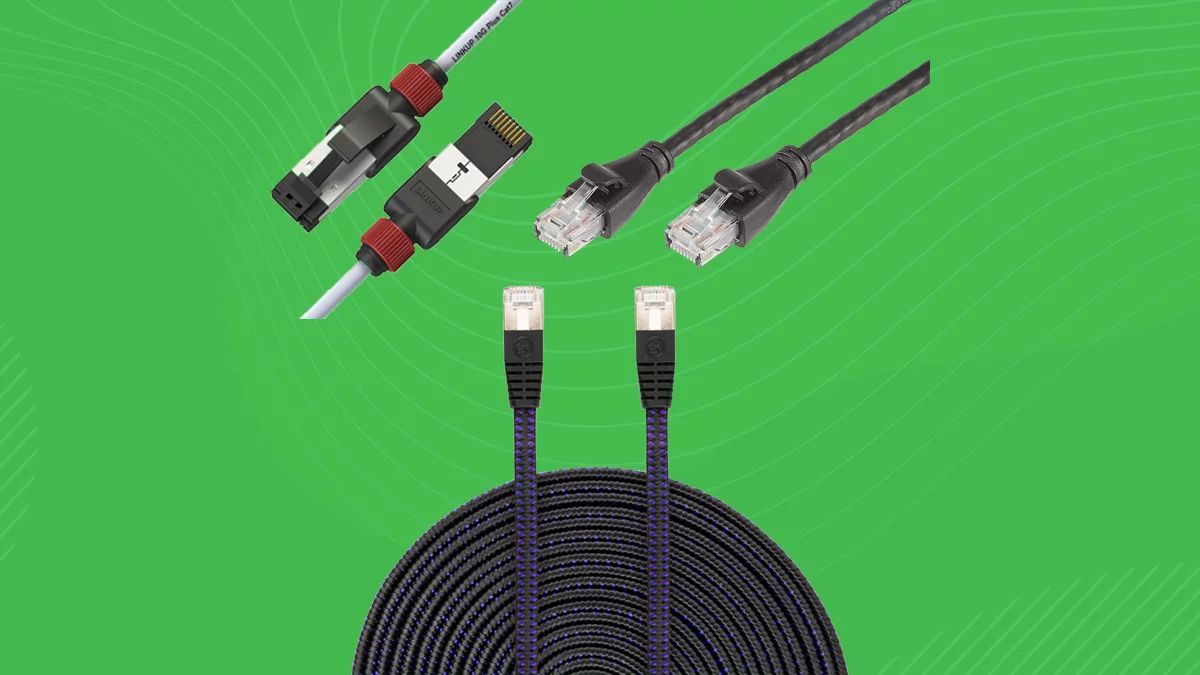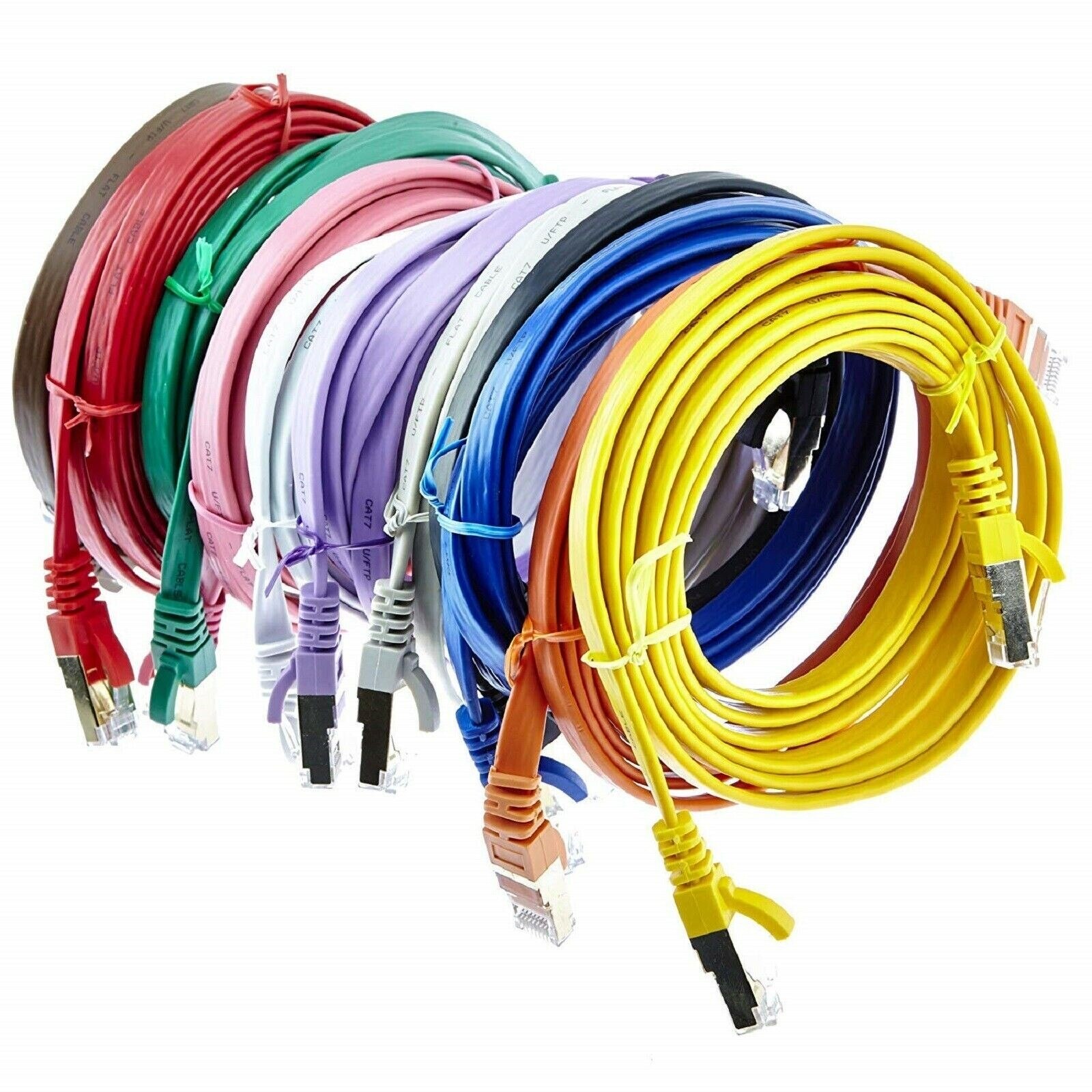Introduction
The world of technology is constantly evolving, and with it, our need for fast and reliable internet connectivity. Whether you’re a casual internet user or a heavy data consumer, having a stable and speedy internet connection is essential. This is where Ethernet cables come into play. Among the many types available, the Cat 5 Ethernet cable has been a popular choice for years. But just how fast is a Cat 5 Ethernet cable, and is it still relevant in today’s world of advanced technology?
Cat 5, or Category 5, refers to a type of Ethernet cable that was widely used in the early 2000s. It became the standard for Ethernet connections and was capable of supporting data transfer speeds of up to 100 megabits per second (Mbps). While this speed was sufficient for most home and small office networks at the time, advancements in technology have since surpassed its capabilities.
In this article, we will explore the speed of a Cat 5 Ethernet cable, its limitations, and whether it can still meet the demands of modern internet usage. We will also compare it to newer cable types such as Cat 5e and Cat 6 to understand the differences and potential benefits of upgrading. So, if you’re curious about how fast a Cat 5 Ethernet cable can be, read on to find out more.
What is a Cat 5 Ethernet Cable?
A Cat 5 Ethernet cable, also known as Category 5 cable, is a type of twisted pair cable commonly used for transmitting data over a network. It consists of four pairs of twisted copper wires that are enclosed in a protective outer sheath. These cables are terminated with connectors known as RJ-45 connectors, which are compatible with most Ethernet ports on computers, routers, switches, and other networking devices.
Cat 5 cables were introduced in the 1990s and quickly gained popularity due to their affordability and reliability. They were commonly used for connecting devices within a local area network (LAN) and were capable of supporting data transfer speeds of up to 100 Mbps. The cables are typically available in various lengths, ranging from a few feet to hundreds of feet, depending on the specific networking requirements.
One of the key features of Cat 5 cables is their ability to reduce crosstalk, electromagnetic interference, and signal loss. The twisted pairs of wires help cancel out these unwanted interferences, ensuring a clean and stable connection. This makes Cat 5 cables suitable for both residential and commercial use.
It’s important to mention that Cat 5 cables are designed for Ethernet connections and are not suitable for transmitting audio or video signals. However, they are compatible with the widely used Ethernet standards, such as 10BASE-T, 100BASE-TX, and 1000BASE-T, which provide reliable data transfer capabilities for most applications.
Overall, Cat 5 Ethernet cables have been the go-to choice for basic home and small office networks for many years. They offer a cost-effective solution for connecting devices and ensuring reliable data transmission. However, with the increasing demand for faster internet speeds and advancements in technology, it’s worth exploring newer cable options such as Cat 5e or Cat 6 for improved performance. In the following sections, we will delve into the differences and benefits of these newer cable types, so stay tuned!
Cat 5 vs. Cat 5e vs. Cat 6: Understanding the Differences
When it comes to Ethernet cables, there are several variations available on the market, each with its own set of features and capabilities. Cat 5, Cat 5e, and Cat 6 are three common cable types that are often compared. Let’s dive into the differences between these cable categories to understand their respective advantages.
Cat 5 Ethernet cables, as mentioned earlier, were the standard choice for network connections in the early 2000s. They are capable of supporting data transfer speeds of up to 100 Mbps, making them suitable for basic internet and network usage. However, Cat 5e (Category 5e) and Cat 6 (Category 6) cables have since been developed to offer improved performance.
Cat 5e cables are an enhanced version of Cat 5 cables, where “e” stands for “enhanced.” These cables are designed to reduce crosstalk interference and are capable of supporting data transfer speeds of up to 1000 Mbps (1 Gbps). This makes Cat 5e cables ideal for applications that require faster data transmission, such as online gaming, video streaming, and large file transfers.
On the other hand, Cat 6 cables further improve upon the capabilities of Cat 5e and are built to handle higher data speeds and reduced signal loss. These cables have more stringent manufacturing standards, which result in better insulation, reduced crosstalk, and superior performance. Cat 6 cables are capable of supporting data transfer speeds of up to 10 Gbps, making them suitable for demanding applications that require high bandwidth, such as data centers or multimedia production environments.
It’s important to note that while Cat 5e and Cat 6 cables offer higher data transfer speeds and better performance than Cat 5 cables, the maximum speed achievable also depends on other factors, such as the networking hardware being used and the quality of the installation. Additionally, both Cat 5e and Cat 6 cables are backward compatible with Cat 5 cables, meaning they can be used in place of Cat 5 cables without any issues.
In summary, Cat 5e and Cat 6 cables provide enhanced performance over Cat 5 cables, with faster data transfer speeds and improved signal quality. If you’re looking to future-proof your network or require higher bandwidth for your specific applications, upgrading to Cat 5e or Cat 6 may be worth considering. However, for basic internet usage and average networking needs, Cat 5 cables can still suffice. Now that we have a better understanding of the differences between these cable categories, let’s explore the speed capabilities of Cat 5 Ethernet cables in the next section.
The Speed of a Cat 5 Ethernet Cable
Cat 5 Ethernet cables are designed to support data transfer speeds of up to 100 megabits per second (Mbps). This speed was considered sufficient for most home and small office networks when Cat 5 cables were first introduced. It allowed for smooth internet browsing, email communication, and basic file transfers.
However, with the rapid advancement of technology and the increasing demand for faster internet speeds, the limitations of Cat 5 cables have become apparent. Today, many internet service providers offer higher bandwidth connections, such as Gigabit Ethernet (1 gigabit per second or 1000 Mbps) or even higher speeds. While Cat 5 cables are technically capable of transmitting data at higher speeds, they may not be able to consistently maintain these speeds over long distances or in environments with significant interference.
The effective bandwidth of a Cat 5 Ethernet cable can be affected by a few factors. First, the length of the cable plays a role in determining the maximum achievable speed. As the length of the cable increases, the signal can degrade, resulting in slower data transfer rates. Generally, it is recommended to keep Cat 5 cable lengths under 100 meters to maintain optimal performance.
Another factor that can affect the speed is the presence of interference or noise. Cat 5 cables are susceptible to crosstalk, electromagnetic interference, and other environmental factors that can impact the quality of the signal. In heavily congested areas or in the presence of other electronics, the speed and reliability of a Cat 5 cable connection may be compromised.
It’s worth noting that Cat 5 cables can still function well for basic internet usage and everyday network tasks. They are suitable for activities such as web browsing, social media use, and standard definition video streaming. However, if you require faster download and upload speeds for activities like online gaming, 4K video streaming, or large file transfers, upgrading to a higher category cable such as Cat 5e or Cat 6 is recommended.
In summary, while Cat 5 Ethernet cables can technically support higher speeds, their performance may be limited by the cable length and the presence of interference. If you are looking for a faster and more reliable connection, it may be worth considering an upgrade to Cat 5e or Cat 6 cables, which offer improved data transfer capabilities. The decision ultimately depends on your specific needs and the demands of your network environment.
Factors that Affect the Speed of a Cat 5 Ethernet Cable
While Cat 5 Ethernet cables are designed to support data transfer speeds of up to 100 Mbps, the actual speed that can be achieved may vary based on several factors. Understanding these factors can help you optimize the performance of your Cat 5 cable connection. Let’s explore some of the key factors that can affect the speed of a Cat 5 Ethernet cable.
1. Cable Length: The length of the cable is an important factor to consider. As the length increases, the signal strength can weaken, leading to a decrease in data transfer speeds. It is recommended to keep Cat 5 cable lengths under 100 meters to maintain optimal performance.
2. Quality of Installation: The quality of the installation and the way the cable is terminated can impact the signal quality and overall speed. Poorly crimped connectors or improper termination can result in signal degradation and reduced performance.
3. Interference and Crosstalk: Cat 5 cables are susceptible to interference and crosstalk, which can degrade the signal quality and affect the speed. Interference can come from nearby electrical devices, other cables running parallel to the Ethernet cable, or even external sources such as radio frequencies. It is recommended to keep Ethernet cables away from sources of interference to minimize signal disruptions.
4. Networking Hardware: The networking hardware used in your network setup also plays a role in determining the speed capabilities. While a Cat 5 cable can support speeds of up to 100 Mbps, if the networking devices (routers, switches, etc.) have limitations, the actual speed may be lower. Upgrading to newer and faster networking hardware can help maximize the potential speed of your Cat 5 cable connection.
5. Network Congestion: In shared network environments, network congestion can affect the speed of a Cat 5 Ethernet cable. If multiple devices are connected to the same network and simultaneously accessing the internet or transmitting data, the overall bandwidth may be limited, resulting in slower speeds for individual connections.
It’s important to consider these factors when evaluating the speed capabilities of a Cat 5 Ethernet cable. While upgrading to higher category cables like Cat 5e or Cat 6 can provide better performance, optimizing these factors can help improve the speed and reliability of your Cat 5 connection. By ensuring proper cable installation, minimizing interference, and using quality networking hardware, you can maximize the potential of your Cat 5 Ethernet cable and achieve optimal data transfer speeds for your network needs.
Can a Cat 5 Ethernet Cable Support Gigabit Ethernet?
Cat 5 Ethernet cables were originally designed to support data transfer speeds of up to 100 Mbps. However, in many cases, they can actually handle higher speeds, including Gigabit Ethernet (1 gigabit per second or 1000 Mbps). This begs the question: Can a Cat 5 cable be used for Gigabit Ethernet connections?
The short answer is, it depends. While Cat 5 cables may technically be capable of transmitting data at Gigabit Ethernet speeds, their performance may be limited by various factors. One of the critical limitations is the cable length. As the length of the cable increases, the signal may weaken, leading to higher signal loss and reduced performance.
In practice, Cat 5 cables that are shorter in length, typically under 100 meters, have a higher likelihood of achieving Gigabit Ethernet speeds. Additionally, the quality of the cable and the installation also play a role. If the cable is of lower quality or if the terminations and connectors are not properly crimped, the signal integrity can be compromised, resulting in slower speeds or intermittent connectivity.
Furthermore, Cat 5 cables are more susceptible to crosstalk and interference compared to higher category cables. This can be particularly problematic when attempting to achieve Gigabit Ethernet speeds, which require a higher level of signal integrity. In environments with significant interference or crosstalk, it may be challenging for a Cat 5 cable to consistently support Gigabit Ethernet speeds.
It’s important to note that while using a Cat 5 Ethernet cable for Gigabit Ethernet is technically possible in certain scenarios, it is generally recommended to use higher category cables for optimal performance. Cat 5e (enhanced) and Cat 6 cables are specifically designed to handle higher speeds and offer better signal integrity, making them more suitable for Gigabit Ethernet and beyond.
If you are looking to upgrade to Gigabit Ethernet or have a network that requires higher bandwidth, it is advisable to install Cat 5e or Cat 6 cables. These cable types are built to handle the higher data transfer rates associated with Gigabit Ethernet, providing a more reliable and stable connection. Investing in the appropriate cable infrastructure can ensure that you can fully take advantage of the faster speeds and performance offered by Gigabit Ethernet technology.
In summary, while Cat 5 Ethernet cables may be able to support Gigabit Ethernet speeds in some situations, it is generally recommended to use higher category cables, such as Cat 5e or Cat 6, for optimal performance and reliability. Upgrading to these cables ensures that you have the necessary infrastructure to fully harness the advantages of Gigabit Ethernet and any future speed advancements in networking technology.
Upgrading from Cat 5 to Cat 5e or Cat 6: Is it Worth it?
If you’re currently using Cat 5 Ethernet cables and considering an upgrade, you may be wondering if it’s worth it to switch to higher category cables like Cat 5e or Cat 6. Upgrading your cabling infrastructure can offer several benefits, but it’s important to weigh the advantages against the costs and your specific networking needs. Let’s explore the reasons why upgrading from Cat 5 to Cat 5e or Cat 6 may be worth considering.
1. Improved Speed: Cat 5e and Cat 6 cables both offer higher data transfer speeds compared to standard Cat 5 cables. Cat 5e cables are capable of supporting speeds of up to 1000 Mbps (1 Gbps), while Cat 6 cables can handle speeds up to 10 Gbps. If you require faster internet speeds, engage in activities that demand high bandwidth, or operate in a network environment that requires substantial data transfers, upgrading to Cat 5e or Cat 6 can provide a significant boost in performance.
2. Better Signal Integrity: Cat 5e and Cat 6 cables are designed with improved insulation, reduced crosstalk, and stricter manufacturing standards, resulting in enhanced signal integrity. This means that you are less likely to experience signal degradation, interference, or data loss. This improved signal quality can lead to more reliable and stable network connections.
3. Future-proofing: Technology continues to evolve, and as new networking standards and devices emerge, having a higher category cable can future-proof your network. Cat 5e and Cat 6 cables are built to handle higher speeds and are compatible with current and upcoming network technologies. Upgrading now can save you the hassle and cost of another upgrade in the near future.
4. Longer Cable Lengths: Cat 5e and Cat 6 cables are capable of supporting longer cable lengths compared to Cat 5 cables while maintaining optimal performance. This can be advantageous in scenarios where you need to span a larger area or connect devices that are further apart.
5. Compatibility: Upgrading from Cat 5 to Cat 5e or Cat 6 doesn’t require replacing all of your existing networking equipment. These cables are backward compatible, meaning they can be used with devices that have Ethernet ports designed for Cat 5 cables. Compatibility with older equipment allows for easy integration without the need for replacing all network devices simultaneously.
While there are clear benefits to upgrading, there are a few factors to consider before making the switch. The cost of upgrading to Cat 5e or Cat 6 cables may be a concern, especially if you have an extensive network setup. Additionally, if your current internet plan does not offer speeds that exceed the capabilities of Cat 5 cables, the need for an immediate upgrade may be diminished.
In summary, upgrading from Cat 5 to Cat 5e or Cat 6 cables can provide improved speed, better signal integrity, future-proofing, longer cable lengths, and compatibility with existing equipment. If your network demands faster speeds, reliability, and the ability to handle future advancements in technology, upgrading may be worth considering. Evaluate your specific networking needs, budget, and future growth plans to make an informed decision that aligns with your requirements.
Conclusion
Ethernet cables, specifically Cat 5 cables, have played a pivotal role in providing reliable internet connectivity for many years. However, as technology advances and demands for faster speeds increase, it’s important to consider whether Cat 5 cables are still suitable for your networking needs.
While Cat 5 cables can technically support speeds of up to 100 Mbps, their performance may be limited by factors such as cable length and interference. Upgrading to higher category cables such as Cat 5e or Cat 6 can offer improved speed, signal integrity, and future-proofing for your network.
Cat 5e cables provide enhanced performance with data transfer speeds of up to 1000 Mbps and reduced crosstalk interference. Meanwhile, Cat 6 cables take it a step further, supporting speeds of up to 10 Gbps and offering even better signal quality.
When considering an upgrade, assess your specific networking requirements. If you engage in activities that demand higher bandwidth, such as online gaming or 4K video streaming, or require longer cable lengths without compromising performance, upgrading to Cat 5e or Cat 6 may be worth it.
It’s important to note that while upgrading your cables can improve network performance, it may also require updating other networking hardware and devices to fully take advantage of the higher speeds. Additionally, consider the cost implications and whether your current internet plan can maximize the benefits of the upgraded cables.
In conclusion, Cat 5 cables have served us well in the past, but as technology evolves, it may be time to consider upgrading to Cat 5e or Cat 6 cables for faster speeds, improved signal integrity, and future-proofing your network. Evaluate your specific needs, budget, and future growth plans to make an informed decision that aligns with your networking requirements. Whether you decide to stick with Cat 5 or opt for an upgrade, maintaining a stable and reliable internet connection remains essential in our increasingly connected world.







